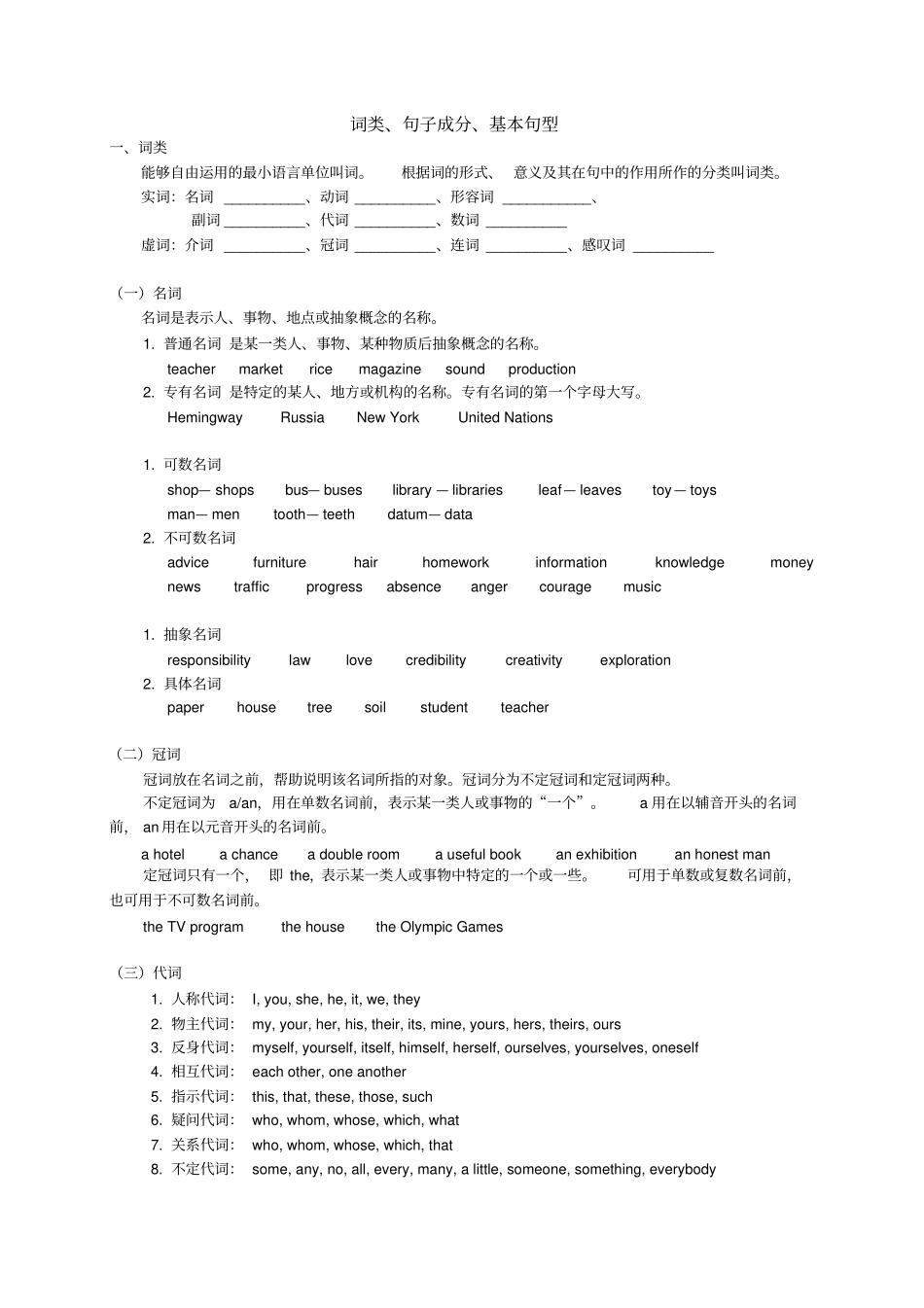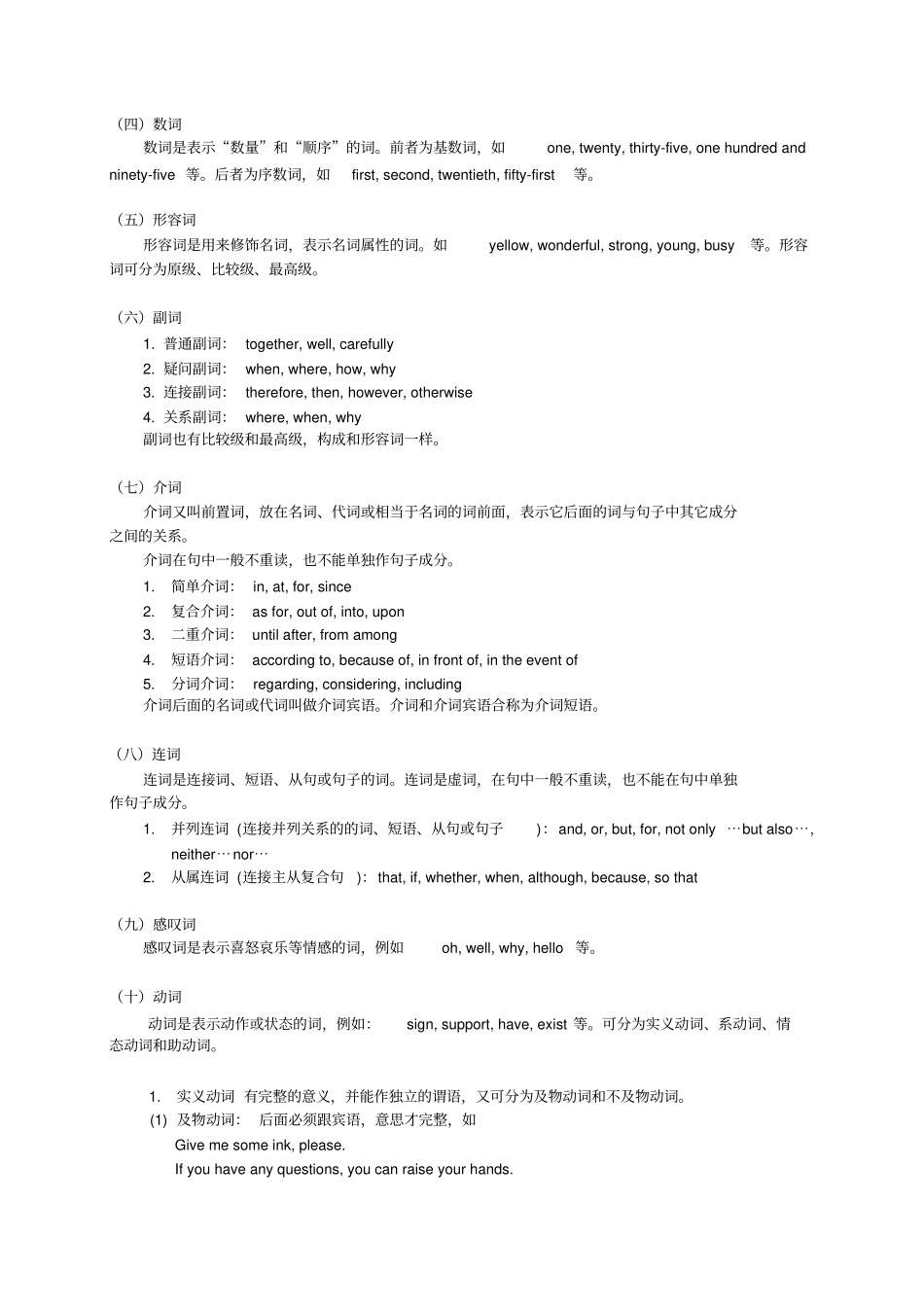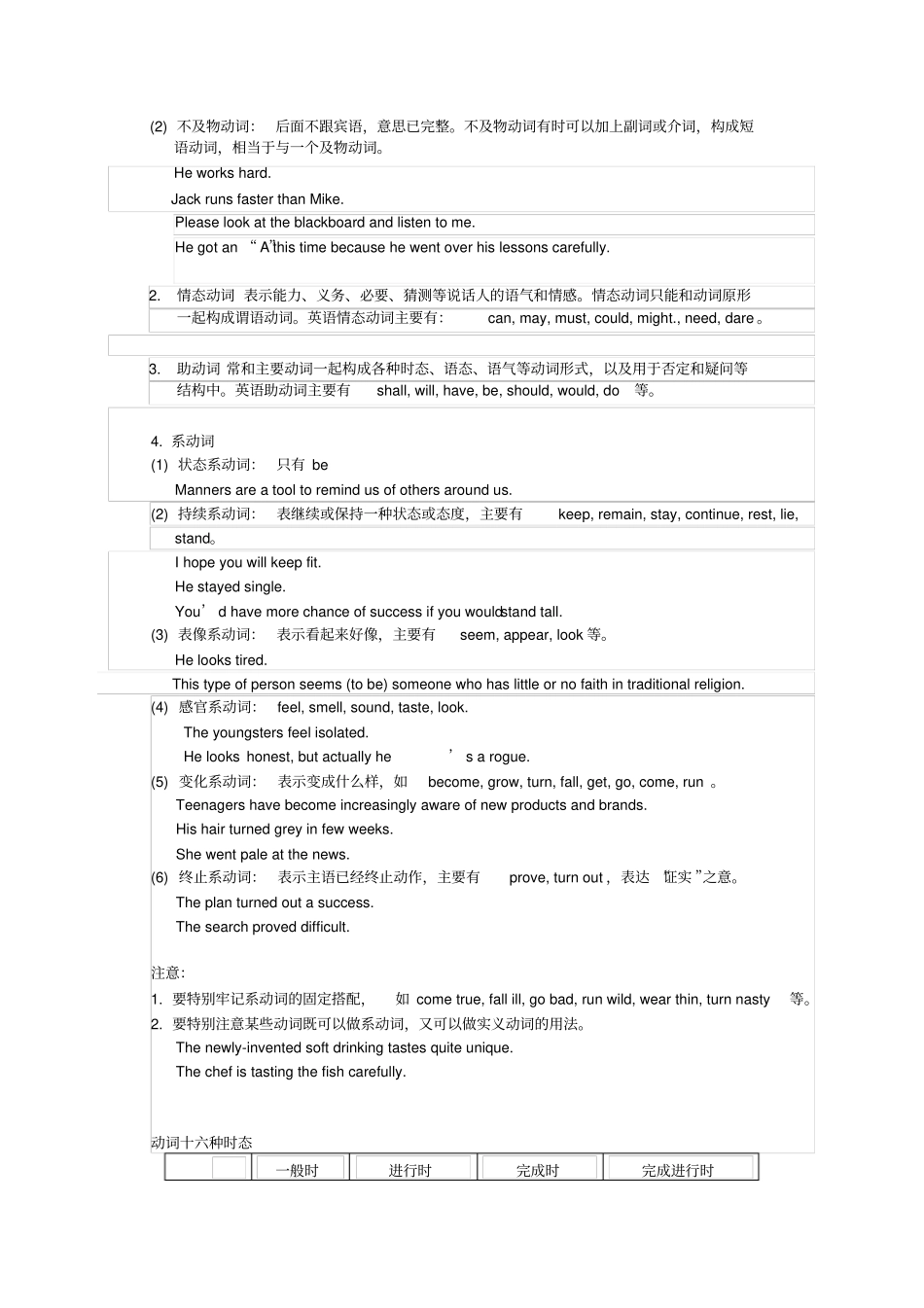词类、句子成分、基本句型一、词类能够自由运用的最小语言单位叫词。根据词的形式、 意义及其在句中的作用所作的分类叫词类。实词:名词 __________、动词 __________、形容词 ___________、副词 __________、代词 __________、数词 __________ 虚词:介词 __________、冠词 __________、连词 __________、感叹词 __________ (一)名词名词是表示人、事物、地点或抽象概念的名称。1. 普通名词 是某一类人、事物、某种物质后抽象概念的名称。teacher market rice magazine sound production 2. 专有名词 是特定的某人、地方或机构的名称。专有名词的第一个字母大写。Hemingway Russia New York United Nations 1. 可数名词shop— shops bus— buses library — libraries leaf— leaves toy— toys man— men tooth— teeth datum— data 2. 不可数名词advice furniture hair homework information knowledge money news traffic progress absence anger courage music 1. 抽象名词responsibility law love credibility creativity exploration 2. 具体名词paper house tree soil student teacher (二)冠词冠词放在名词之前,帮助说明该名词所指的对象。冠词分为不定冠词和定冠词两种。不定冠词为a/an,用在单数名词前,表示某一类人或事物的“一个”。a 用在以辅音开头的名词前, an 用在以元音开头的名词前。a hotel a chance a double room a useful book an exhibition an honest man 定冠词只有一个, 即 the,表示某一类人或事物中特定的一个或一些。可用于单数或复数名词前,也可用于不可数名词前。the TV program the house the Olympic Games (三)代词1. 人称代词: I, you, she, he, it, we, they 2. 物主代词: my, your, her, his, their, its, mine, yours, hers, theirs, ours 3. 反身代词: myself, yourself, itself, himself, herself, ourselves, yourselves, oneself 4. 相互代词: each other, one another 5. 指示代词: this, that, these, those, such 6. 疑问代词: who, whom, whose, which, what 7. 关系代词: who, whom, whose, which, that 8. 不定代词: some, any, no, all, every, many, a little, someone, something, e...


